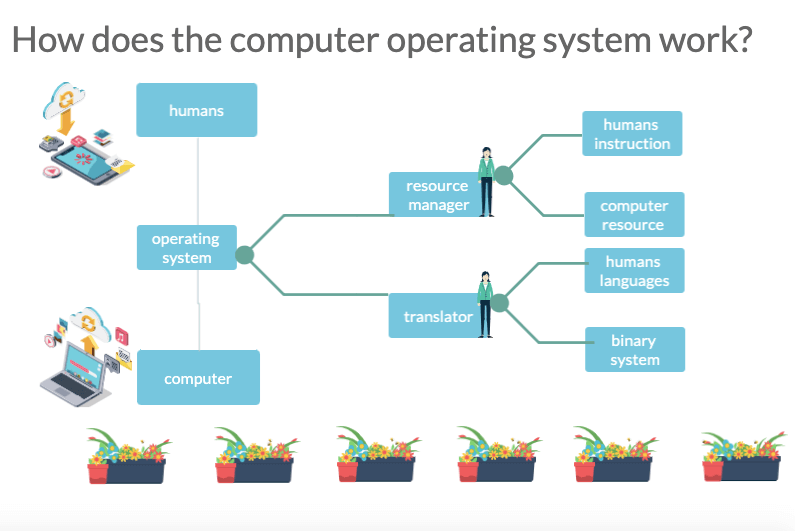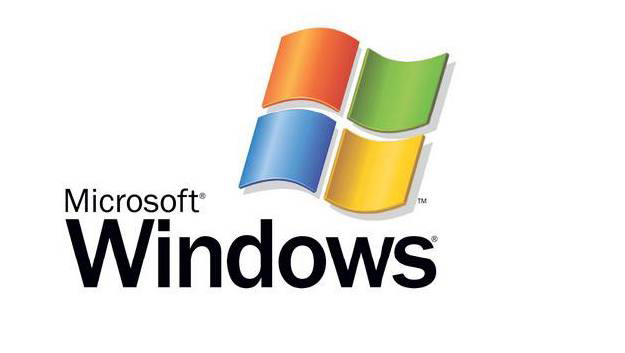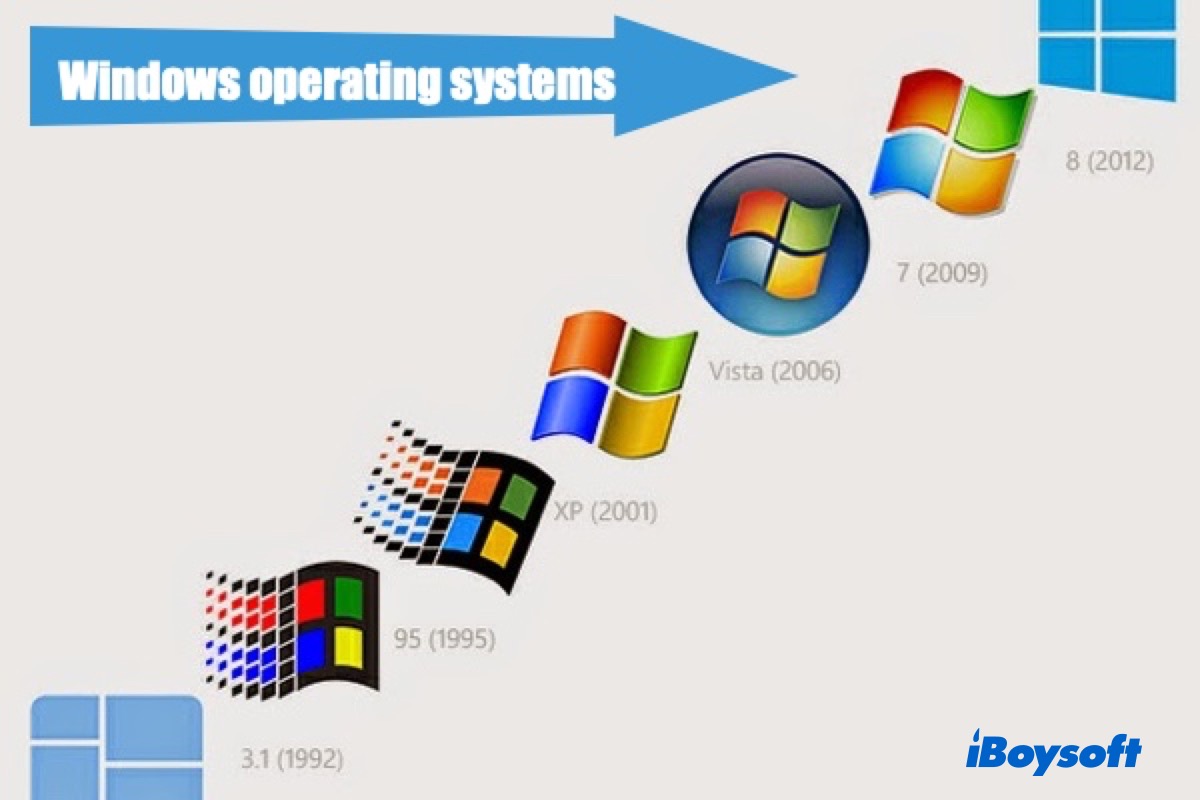Nowadays almost every electronic device, including the smartphone, computer, is installed with an operating system. There are many operating systems, including Android, iOS, Windows, Chrome OS, etc. But what is an operating system exactly? Since numbers of people choose computers to complete their work, the operating system we talk about today is the personal computer operating system.
This article will give a clear introduction to what is the computer operating system, how does the operating system work in computer and three major types of computer operating system. At last, it will recommend some useful computer operating systems for you.
What is the operating system?
An operating system (OS) is the system software that manages computer hardware, software resources, and provides common services for computer programs.
Firstly, CPU, memory, input unit and output unit make up a computer. However, a computer can only understand the binary system, which is shown in the form of 0 and 1. Just imagine in the computer world, there are only numerous 0 and 1 instead of humans' languages.
As for the functions, there are mainly two functions of the operating system. Firstly, it plays the role of the resource manager, just like a housekeeper in a big family, helping to keep and distribute the resource if there are multiple things waiting to be dealt with.
Secondly, it acts as a translator between the computer and the user which achieves the goal of man-machine interaction. The operating system translates the abstractions into the human's language.
How does the computer operating system work?
When humans text to the computer, the computer quickly calculates and disposes of the data. However, when there is too much information, there has to be someone else to deal with it. Here comes the operating system. The operating system helps the computer to manage the data and then gives the instructions in computer's language. Since the computer can only read and write the binary system, the operating system plays the role of translator, translating the binary system into a human's language and shows it on the screen, helping users understand the computer's reactions.

Let's see an example of how it works. The task you want to finish is to set up a new folder on the desktop. First, the operating system needs to deploy the drivers for most input devices, such as the keyboard and the mouse, then you can click the mouse and choose the 'New folder', and you can use the keyboard to type, naming the folder.
Then the operating system helps to translate this action into computer's language, which is the binary system, so that the computer can understand what you want and gives its reaction, which is also shown as the binary system.
Next, the operating system allocates some space from the storage device for this new folder. Later, when the task is finished, the operating system again plays the role of a translator, showing the result on the screen. That's how you see a new folder with a name you type on the computer screen.
Different types of the computer operating system and three recommendations
In the field of the personal computer operating system, there are mainly three dominant computer operating system families. They are Microsoft Windows, Apple Mac operating system and Linux operating system.
1. Windows operating system
Covering the biggest share of the computer operating system, the Windows family offers many operating systems for their targets including Windows XP, Windows 7, Windows 8 and so on. The advantages of the Windows operating system are the following: ease of use, available software, high compatibility and so on. However, it also has its disadvantages. For example, poor security and high hardware requirements.
Active desktop Windows families include Windows XP, Windows Vista, Windows 7, Windows 8, Windows 8.1, Windows 10. Here are brief introductions of each Windows operating system.

(1) Windows XP
Released in 2001, Windows XP was marketed in two main editions: the 'Home' edition and the 'Professional' edition. Later these two editions were accompanied by the 'Media Center' edition and 'Tablet PC' edition.
The pros of Windows XP contain good stability, redesigned user interface, streamlined multimedia and progressive networking features, little use of computer resources, etc. However, it also received some criticism for its expensive price, poor security and incompatibility. The biggest problem of Windows XP is that it couldn't be installed on multiple computers because it only had a single user license. This can be very troublesome if you own more than one computer.
(2) Windows Vista
Released in 2006, Windows Vista made a lot of changes, including the redesigned shell, user interface as well as significant technical changes. It also came with a particular focus on security features. Every coin has two sides, it was criticized for its drop of performance, longer boot time, etc.
(3) Windows 7
Unlike its predecessor, Windows Vista, Windows 7, released in 2006, did not offer many new features. It intended to be a more focused version. For pros, Windows 7 mainly offered faster speed, better resource management, and much more improved performance than Windows Vista. For its cons, if you always find it very difficult to make a decision, then Windows 7 might not be your best choice since it had 6 different editions. Which one to choose? That is a question.
(4) Windows 8 and 8.1
As the successor to Windows 7, Windows 8, released in 2012, made many significant improvements, including super-fast boot time, a good browser-the Explorer 10, and enhanced safety. It's worth-mentioning that Windows 8 introduced a user interface that optimized the touch-based devices such as your tablets.
As for its cons, some designs just didn't make sense. For example, instead of up and down scrolling, you have to scroll from side to side. What's more, it's impossible to roll up the windows or miniaturize them. For users who get used to the previous Windows operating system, these changes are definitely not customer-friendly.
Windows 8.1, released in 2013, was an upgrade to Windows 8. It introduced new features such as new live tile sizes, deeper OneDrive integration, including the improvement of OneDrive encryption, and many other revisions.
(5) Windows 10
Released in 2014, Windows 10 was announced as the successor to Windows 8.1. One of Windows 10's great improvements was the eye-catchy user interface, including the return of the Start Menu, a virtual desktop system, and the ability to run Windows Store apps within windows on the desktop rather than in full-screen mode. For users who like dealing with multiple tasks at the same time, this ability apparently is an advantage.
As for Windows 10's cons, unfortunately, some features will be lost when you upgrade from older versions to Windows 10. For example, Windows 7 desktop upgrades, Minesweeper as well as Hearts Games will be removed. What's more, watching DVDs requires separate playback software. This is definitely a disadvantage for users who don't like to download excessive software on the computer.
Our recommendations:
Among numbers of Windows operating systems, it is not surprising that Microsoft Windows 7 is widely appreciated by its numerous users. Based on user's feedback, Windows 7 was easy to install, and it also provided the user with fabulous display and suited all types of users such as businessmen, game players and others. What's more, according to infoworld, it improved its security as well.
The second mostly-liked operating system is the Windows 10. Compared with its competitive predecessors, Windows 10 not only maintained the advantages of them, it also made massive improvements in speed, security, interface and other fields as the latest generation of the Windows operating system family, according to pcmag.
2. Mac operating system
• A list of all macOS & Mac OS X versions - including the latest macOS
Our recommendations
Though there is a long debate over the topic that which Mac operating system is the best, among all the Mac operating system, the most highly-acclaimed Mac operating system belongs to the Mac OS X 10.6 Snow Leopard. Released in 2009, Snow Leopard operating system focused more on 'under the hood' functions such as increasing the efficiency, stability of the system. Though Apple ended the support of Snow Leopard, still, there is a large part of users using this system, according to computerworld.
3. Linux operating system
Last is the Linux operating system, as the least-used operating system among the three operating systems, Linux is the only open-source software and free operating system.
